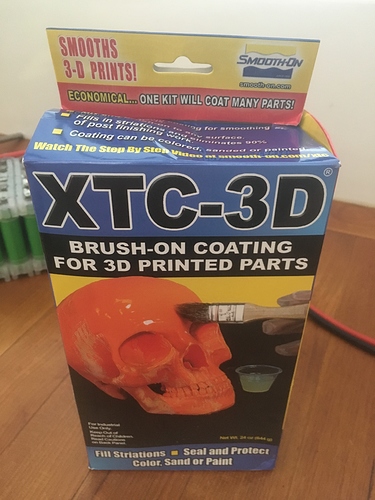How are you sealing your PLA printed parts? Have you had any issues with water intrusion?
Upstream of aluminum tube - epoxy aluminum tube on PLA mast mount, plenty silicone to seal the 3 cable outlets
Downstream of aluminum tube - double O-rings to seal sealmount piece with alu tube. Double lip-seals to seal shaft.
PLA itself is pretty watertight. I print all components100% fill. Hope this helps.
Anything that you can use to seal PLA? I’ve not had the chance to use my parts in the water for very long, but I’ve read PLA doesn’t last long in water.
I don’t see how PLA could leak if you have another structure to it? Where did you read this?
I’ve read about PLA not being waterproof in a few threads on Thingiverse. Don’t know how true it is. We will find out soon enough, especially in harsh salt water conditions. This guy had a printed filter in a fish tank and this was his result.
http://www.3ders.org/images2016/how-fast-does-moisture-break-down-popular-3d-printing-material-pla-02.jpg
Could have been just a cheap filament, who knows?
My experience is that all sort of other stuff will break down before the PLA degrades ![]() … But yes you are right, PLA is biodegradable and it will break down eventually: Polylactic acid - Wikipedia. Great for prototyping and testing though.
… But yes you are right, PLA is biodegradable and it will break down eventually: Polylactic acid - Wikipedia. Great for prototyping and testing though.
Interesting! Damn you salt water!
Anet A8, reallly cheap, but I have good result… At Office, will be able to use Markforged : Carbon Fiber Composite 3D Printer: Markforged Mark Two
I will be able to do print with Carbon reinforcement… Will help for sure! ![]() Go Canucks :)
Go Canucks :)![]()
![]()
PLA is not fully waterproof, even at 100% infill. It has to be coated with something else. I printed a full test unit and dropped it underwater for 2 hours. Opened it up and there was a bit of water inside. I then used pressure tests to so see if the o-rings or printed parts were leaking and it turned out to be the printed parts.
I bought a CR10 mini great print results and a good quality and price.
So what do you recommend for a coating for pla prints?
Epoxy resin is a good way
I have used polyurethane with good success. I submerge the parts for 20 minutes then let dry.
Hi Mate,
I exclusively print in PC-max. It’s a bit of a headfuck at the start. One you have it dialed in it’s as simple as getting the mail each day. Happy to share what I know.
Aaron
Hey Mate,
I’m using a prusa i3 MK2S. I’ll be honest and say it’s not the best engineered printer out there. However once you spend 20-40hrs with the online support guys you’ll be sweet (it’s $699). I print PC-max parts exclusively with no issues now. You will need simplify3D though as the raft settings in sli3er are garbage. There’s a free copy on pirate bay  hindsight is 20/20. If I did buy another 3D printer I’d spend double and buy an original markforge createrPro. Let me know what you need to know. Happy to help.
hindsight is 20/20. If I did buy another 3D printer I’d spend double and buy an original markforge createrPro. Let me know what you need to know. Happy to help.
Aaron
I’m really considering sending my parts off for SLS printing. It is watertight and seems so cool looking! Kinda expensive ($350 and up), but I shouldn’t need to print but one time.
Hi alarach,
I use PETG. I think, it’s the best cheap material to print mechanical parts.
I use wanhao i3 and cura.
Parameters:
Bed temp: 88°C
Extruder temp: 250°C
Flow rate: 102% (compared to PLA)
Layer height: 0.1
Infill: 100% (prop,stator etc.)
Infill: 30% Shell: 1.12mm (housing)
It works well for me.
solid works 2016, mesh mixer for some grabcad STL files that might need a touch up and then Sli3er and a custom cheap Anet a8 for the printing. cheapest printer around with a huge facebook support group to solve any issue.
my standard parameters for all my parts so far is PLA .2 layer height, 4 outer walls , 3 top and bottom layers all printed at 50-70mm/s , 100percent fan after the first 5 layers, 195 degrees on the hotend and 60-65 on the bed.
Cheers, David.
@foiledagain @tylerclark I believe acetone vapour smooths out 3D print surfaces too. I guess a smoother surface would help avoid water penetration.

